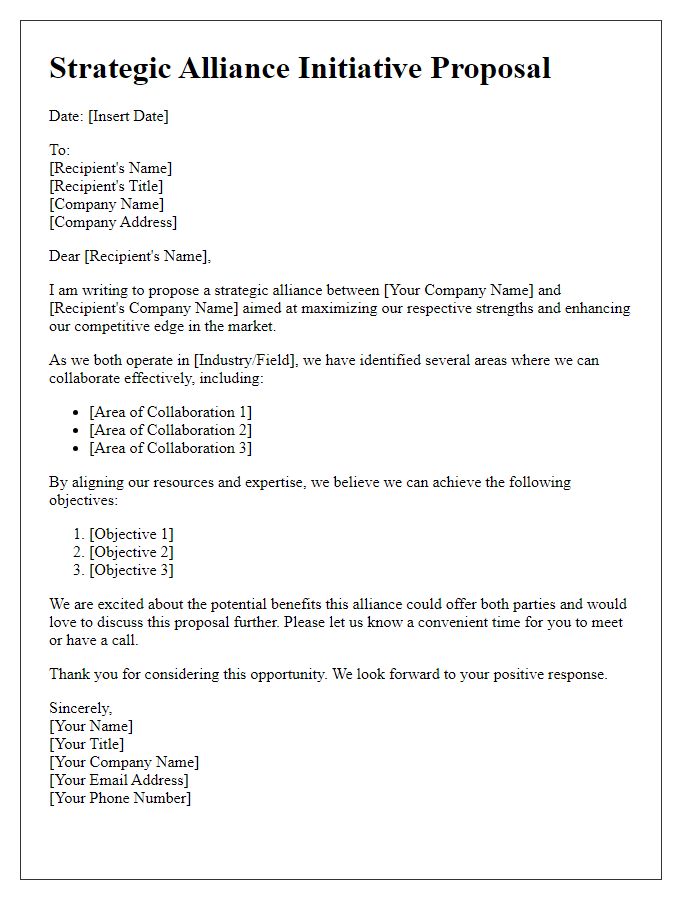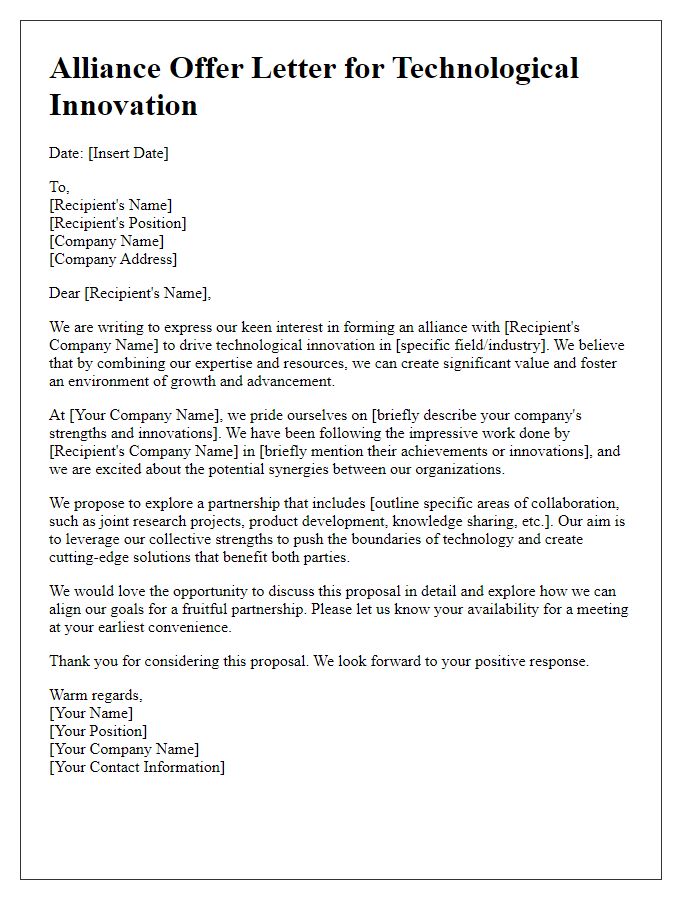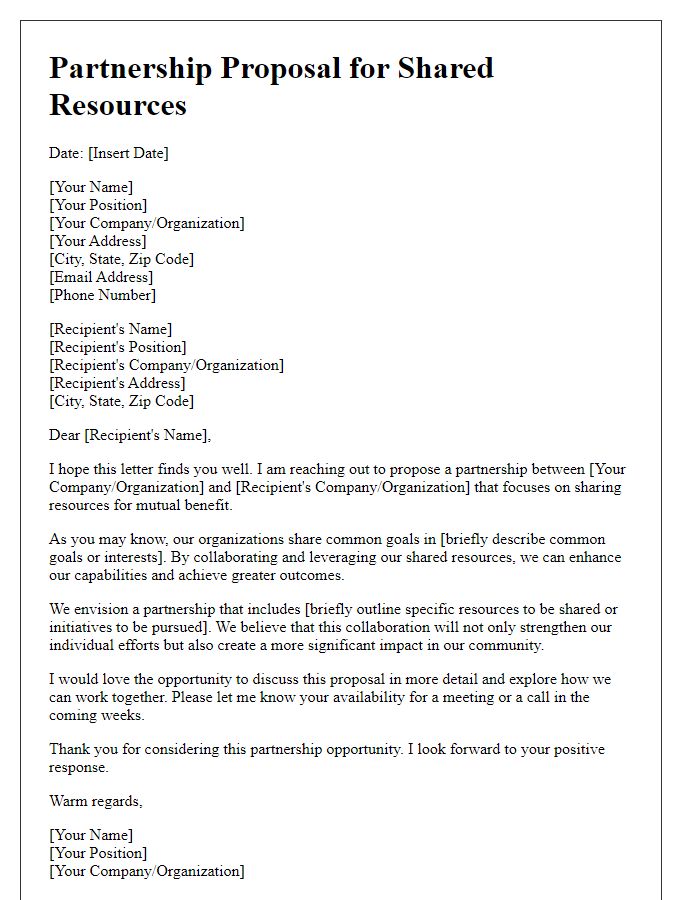Are you looking to elevate your business to new heights? A strategic business alliance can unlock incredible opportunities for growth and innovation, benefiting both parties involved. By collaborating and pooling resources, you can navigate challenges and reach ambitious goals together. If you're interested in discovering how to forge a successful partnership, read more to explore the ins and outs of creating a compelling alliance proposal.

Clear Objectives
A strategic business alliance involves clear objectives that define partnership goals such as increasing market share, accessing new customer segments, or leveraging complementary strengths. For instance, a technology firm aiming to enhance its product line through collaboration with a manufacturing company could target a specific percentage increase in production efficiency within a defined timeframe, such as 20% over the next 12 months. Joint marketing initiatives might aim for a measurable increase in brand awareness, tracked through metrics like website traffic or social media engagement, utilizing platforms like Google Analytics or HubSpot. Additionally, key performance indicators (KPIs) should be established to assess the effectiveness of the alliance, including metrics on sales growth, customer retention, and return on investment (ROI). Clear communication of these objectives sets the foundation for collaboration, ensuring both parties are aligned toward achieving mutual success.
Mutual Benefits
A strategic business alliance offers numerous mutual benefits for involved entities. By collaborating, companies can expand market reach, leveraging combined resources and expertise. Enhanced innovation emerges from sharing research and development efforts, allowing for quicker product launches. Competitive advantages are gained through increased bargaining power with suppliers, accessing new technologies, and sharing risks associated with market entry or product development. Cost savings are achievable as partners streamline operations and share infrastructure investments. Access to diverse customer bases fosters cross-selling opportunities, amplifying revenue potential. Strengthened brand reputation occurs through association with reputable partners, creating a stronger market presence. Overall, a well-structured strategic alliance can lead to long-term sustainability and growth for both parties involved.
Business Compatibility
Strategic business alliances can enhance market presence and operational efficiency between complementary companies. For example, in technology sectors, partnerships between software developers and hardware manufacturers can streamline product development cycles. Market alignment, such as targeting similar customer demographics in urban areas like New York City, can drive joint marketing strategies. Operational synergies might include shared resources, such as research and development facilities in Silicon Valley, which foster innovation. Cultural compatibility between teams is essential, ensuring shared values and communication styles facilitate collaboration. Overall, a well-defined strategic alliance agreement can lead to increased competitive advantage, accessing new customer bases, and improving overall business resilience.
Long-Term Vision
A strategic business alliance can significantly enhance competitive advantage. Key elements in such partnerships include resource sharing (financial, human, technological), risk mitigation (joint ventures mitigate individual exposure), and market access (expanding into new regions effectively). Successful collaborations, like the partnership between Starbucks and PepsiCo in 1994, illustrate how companies can leverage each other's strengths to develop innovative products, such as ready-to-drink coffee beverages. Establishing clear communication channels and mutually agreed objectives are essential for long-term success. Emphasizing alignment in corporate goals, such as sustainability initiatives or customer engagement strategies, can strengthen the alliance and foster a collaborative culture.
Legal and Compliance Considerations
Strategic business alliances necessitate careful attention to legal and compliance considerations critical for ensuring the partnership's success. Entities must navigate various regulations, such as antitrust laws, which prevent monopolistic practices and maintain fair competition. Compliance with the Federal Trade Commission (FTC) guidelines is essential to avoid potential legal repercussions. Contracts should detail each party's responsibilities, liabilities, and dispute resolution mechanisms to minimize misunderstandings. Additionally, privacy regulations like the General Data Protection Regulation (GDPR) mandate responsible handling of customer data, affecting data-sharing agreements within the alliance. Companies must also consider sector-specific regulations, such as those in the healthcare and financial industries, which impose strict compliance requirements on collaboration. Establishing a robust governance framework can help ensure ongoing adherence to these legal standards and foster a trustworthy partnership.
















Comments